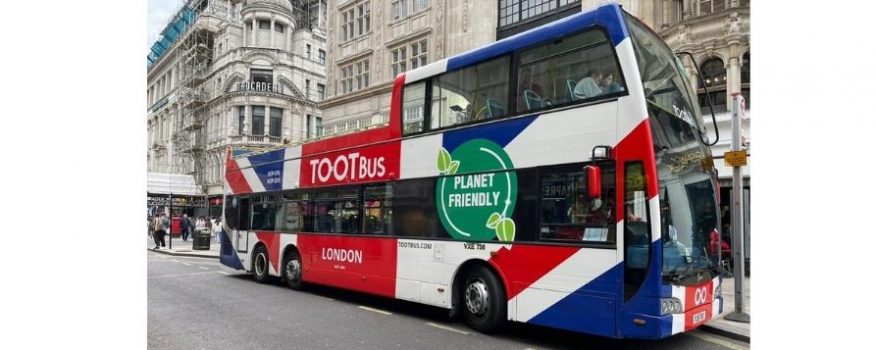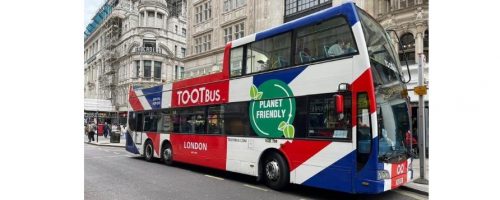Tootbus London, has announced that the company’s vehicles have switched to 100% renewable energy sources. The move is in line with the company’s strategy to be more environmentally friendly. Tootbus London already has the first two electric open-top buses in London.
The tourist buses, which operate in London and Windsor, will be powered by HVO (hydrotreated vegetable oil), a bio-based liquid fuel and diesel substitute. Importantly, the use of HVO fuel will reduce greenhouse emissions by 90%. Older diesel vehicles within the fleet will also undergo an electric retrofitting programme as part of the company’s commitment to using renewable energy sources.
Gavin Brooking, Managing Director of Tootbus London said “Given the importance of tackling climate change, we want to do our part to make our vehicles greener. Customers are increasingly factoring in sustainability into their tourism trips and our shift to environmentally-friendly fuel will help visitors to rediscover cities by offering green transport to all”.
Based in Wandsworth, Tootbus London offers customers hop-on hop-off tours on its open-air buses of some of the world’s most famous attractions. To mark the change, Tootbus London updated the vehicles’ livery which features a Union Jack and planet friendly signage.
To assist with post-pandemic recovery, the tourism industry must play its part in revitalising cities. As such, operators in the tourism industry are increasingly recognising that they must become more sustainable. Tootbus London strives for its legacy vehicles to be as environmentally friendly as possible.
The new HVO-powered vehicles will be crucial in improving air quality, giving the company a significant advantage as being the first and the only very low emission player in London. Work is also underway to source “greener” electricity suppliers.
Tootbus London is part of RATP Dev, one of the world’s largest urban transport operators. The company manages over 100 transportation systems across the world, spanning metro lines, tramways, bus networks, urban rail lines, intercity rail lines, subway routes and more – transporting 1.5 billion passengers per year. It is working to find the right solutions to reduce traffic levels and meet the demands of the global energy transition.










